
The 25-year-old engineer began her bike riding journey with a desire to ride at the age of 14, which she expressed to her uncle who advised her to put the pedal to the metal, quite literally. Thus began the 14-year-old’s first bike venture. She debuted on a Hero Passion and later got her first Activa at the age of 18. Since then, there was no looking back for Das. Her love for motorcycles further transcended into her academics, making Das take up Mechanical Engineering at a degree level.
In 2016, Das enrolled herself into the Ambey Valley Drag Race-India Speed Week after being motivated by her friends and family while being completely oblivious to the car racing scenario in India. However, the following year, she participated in both car and bike categories and came home with the title of ‘Fastest Female on Bike’. Although the biker began her racing career with cars, she prefers racing on bikes as she believes that track car races are way more expensive to be a part of.
During the drag race event, she was noticed by several senior riders who then helped her participate in the selection round for India’s first female bike racing team powered by TVS Racing. Among the 60 participants who were pitted against each other to make it to the first-ever team, 15 racers were selected, which also included Das. She praises TVS for taking up the initiative to promote racing for women and believes that it has certainly increased the number of women entering the industry.
“The initiative taken up by TVS has helped motivate women to get more involved in motorsports. I remember, in 2016, when I took part in drag races, there were around 400-450 boys and just four or five girls in the entire competition. After the TVS racing team was set up, the number of girls participating doubled. As years passed by, the number went on increasing. I believe the more racers the people see, the more awareness it will create,” she said.
Similarly, Das also got into racing after being inspired by Alisha Abdullah, India’s first female national racing champion. She recollects being trained by Abdullah in the TVS team as one of her luckiest days.
Further down the road, Das felt the need to move forward. She clearly believes in the phrase, the bigger the better. So she waited till she turned 21 to officially start her bus driving training. However, she was up for a bumpy ride. Most training centres mocked and questioned her ability to handle a heavy vehicle, being a woman. This further fuelled her drive to get trained. Expecting the worst, she reluctantly applied for the BEST training course as her last resort. However, the team was more than happy to train her and she received her licence soon after. On completing the training period, the 24-year-old was informed of the feat she had achieved – the triumph of becoming the first female to complete the training under BEST.
Another major laurel that came her way was the Great Asian Odyssey, a 15,000 km road trip with fellow bikers, covering the vast Southeast-Asian region of Thailand, Malaysia, Singapore and Sri Lanka, where she proudly represented India at key places.
On being asked about difficulties a woman might face on roads, Das said, “None.” She says most people are more than happy to help a female rider. She recalls how women in rural areas come to strike up a conversation and get genuinely fascinated to see a female bike rider. In terms of personal needs too, she believes that most roads are fairly equipped.
Talking about family support, Das affirms that her mother’s complete support is what has helped her move forward. Despite receiving flak from other members of the family or even outsiders, her mother has stood by her like a rock. She says that even though many people have brought up the ‘girl factor’ to stop her from going on long trips, her mother always nodded ‘yes’ to her crazy adventures. However, Das also makes sure to be responsible while on trips by regularly informing her mother of her whereabouts.
Das has recently ventured into YouTube video creation space with her first introduction video already up for viewing. She aims to make content in her native language Telugu as a way to connect to the people back home, as most people mistake her to be a Mumbaikar. Apart from this, she also plans to feature her riding and travel videos and also use it as a platform to motivate more people into motorsports. She credits YouTuber Tagore Cherry, aka Cherry Vlogs, for persuading her into starting her own YouTube channel.
Commenting on her future goals, she says her next target is to ride to the Mount Everest base camp, which will be a challenge she would like to embark on. Additionally, she would also like to try her hand again at car racing. She also mentions the BMW S 1000 RR to be her dream bike. (MT)
Bajaj Auto Intros Updated Pulsar 150 Range At INR 108,772
- By MT Bureau
- December 24, 2025
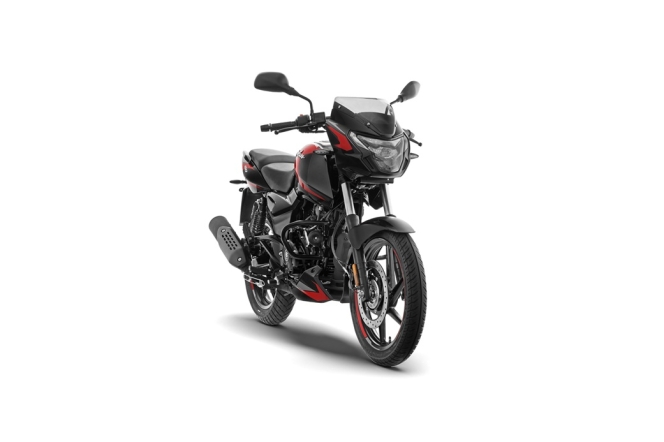
Bajaj Auto, one of the leading two-wheeler and three-wheeler manufacturers, has updated its popular Pulsar 150 motorcycle range. The updates include the introduction of LED headlamps and LED blinkers to the model, which the company states is intended to improve visibility and usability while maintaining the vehicle's design identity.
The updated range is available at the following ex-showroom Delhi prices – Pulsar 150 SD at INR 108,772, Pulsar 150 SD UG at INR 111,669 and Pulsar 150 TD UG at INR 115,481.
The motorcycle retains its frame and stance, though Bajaj has introduced new colour options and graphics. The Pulsar 150 continues to utilise DTS-i (Digital Twin Spark-ignition) technology, which uses two spark plugs to ignite the air-fuel mixture in the combustion chamber, intended to improve combustion efficiency and power output.
The update focuses on integrating modern lighting components into the existing platform, which originally established the sports motorcycling segment in India.
Sarang Kanade, President, Motorcycle Business Unit, Bajaj Auto, said, “The Pulsar 150 has defined performance motorcycling for generations. With this update, we have preserved its classic character while thoughtfully adding modern LED lighting, ensuring the Pulsar 150 remains relevant, recognisable and Definitely Daring.”
Suzuki Motorcycle India Conducts Access Mileage Contest In Palwal
- By MT Bureau
- December 24, 2025
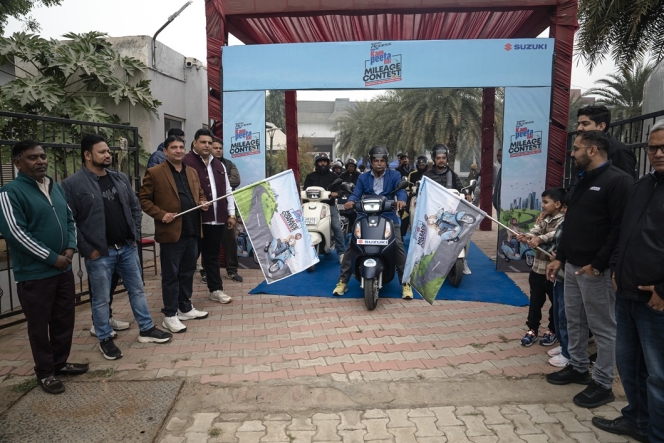
Suzuki Motorcycle India (SMIPL), the subsidiary of Suzuki Motor Corporation, Japan, held a mileage contest for the Suzuki Access scooter in Palwal. The event involved 35 participants, including current owners and prospective buyers, to test the fuel efficiency of the scooter under city driving conditions.
The initiative is part of the brand’s ‘Pickup Bhi, Mileage Bhi’ strategy, which focuses on balancing engine performance with fuel economy and build quality.
The event was organised in partnership with RV Suzuki in Palwal. The participants, all of whom had purchased their scooters within the last year, followed a specific testing protocol: a designated 20-kilometre circuit on city roads, scooters were operated on a full tank, then refilled at the end of the journey to calculate the exact fuel consumed. Potential customers were provided with test rides and the opportunity to interview existing owners regarding reliability and comfort.
Deepak Mutreja, Vice-President, Sales & Marketing, Suzuki Motorcycle India, said, “The Suzuki Access Mileage Contest places a strong focus on fuel efficiency, bringing our brand promise of ‘Pickup Bhi, Mileage Bhi, Shandar Quality Ke Sath’ to life. By riding on city roads, participants experience the scooter’s real-world mileage. Along with mileage, customers also get to experience the quality and reliability that have made the Access a trusted choice of over 6 million customers. We appreciate the participation from customers in Palwal. We will continue to extend such on-ground initiatives to more cities across India, allowing customers to connect closely with out two-wheelers and witness their performance firsthand.”
The company intends to expand these on-ground initiatives to additional cities across India to demonstrate the performance of its two-wheeler portfolio in local environments.
Ola Electric Launches Hyperservice Centres With Same-Day Service Guarantee
- By MT Bureau
- December 23, 2025
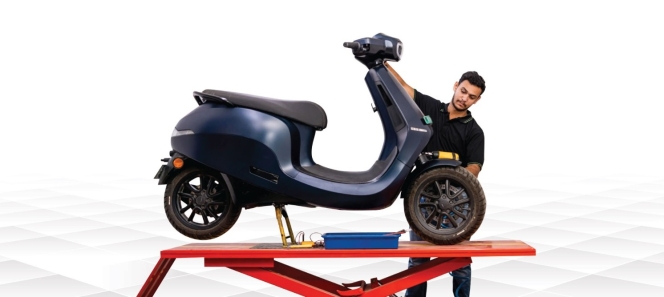
Bengaluru-based electric vehicle maker Ola Electric has expanded its Hyperservice initiative by launching dedicated centres that offer a same-day service guarantee for eligible customers at no extra cost. The company will upgrade its existing service infrastructure into Hyperservice Centres, beginning with a facility in Indiranagar, Bengaluru.
The expansion is intended to reduce service lead times and increase transparency through a digital workflow.
The Hyperservice Centres include several facilities for customers and technical upgrades for vehicle maintenance. The waiting area includes a lounge and Wi-Fi connectivity for customers. Real-time visibility of the servicing stages is provided via the Ola Electric app. Going forward, the company plans to upgrade selected centres across India in the coming weeks.
Ola Electric has also transitioned Hyperservice into an open platform. This move makes the company’s spare parts, diagnostic tools, and training modules available to independent garages, mechanics, and fleet operators.
Under this model, parts can be purchased directly through the Ola Electric app or website. This is intended to allow garages and customers to access components without the use of intermediaries.
“As part of the ongoing service upgrade we are reimagining many of the fundamental aspects of the service experience. We see it as a core part of Ola ownership, and it needs the same level of innovation as the product itself. With Hyperservice Centres, we are setting a new benchmark – same-day service guarantee. At no extra cost for any customer. This is about using technology, process redesign and scale to remove friction and give every Ola customer a faster, simpler and more transparent service experience,” said the company in a statement.
The company has rolled out an in-app service appointment feature nationwide. The tool allows users to select service slots, track the status of their vehicle, and manage maintenance requirements within the unified platform to replace traditional booking methods.
Hajime Aota Appointed Chairman Of Yamaha Motor India Group
- By MT Bureau
- December 23, 2025
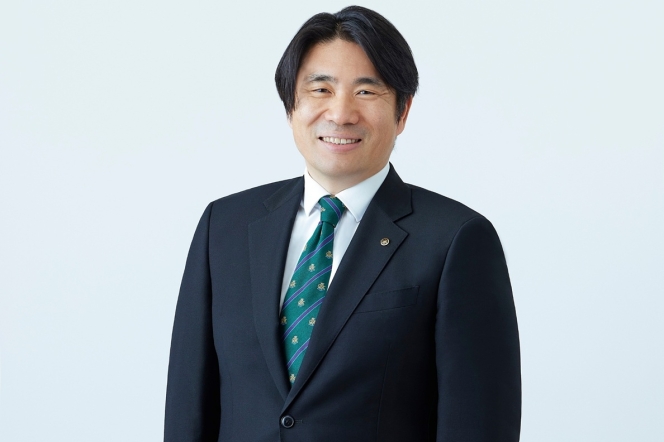
India Yamaha Motor, one of the leading two-wheeler manufacturers in the country, has announced the appointment of Hajime Aota as the Chairman of Yamaha Motor India Group, effective from 1 January 2026. He is set to succeed Itaru Otani, who held the position since November 2024.
The appointment comes as Yamaha continues its focus on the premium segment and digital integration within the Indian two-wheeler market.
Aota joins the Indian operations with experience in corporate strategy, planning and venture business development. He has held leadership roles in Japan, the United States and the United Kingdom.
Prior to this role, Aota served as Executive Officer at Yamaha Motor Co, and Chief General Manager of the Corporate Strategy Centre at the global headquarters in Japan. In these positions, he managed corporate strategy, sustainability and digital transformation.
He has also worked as Chairperson of Yamaha Motor Ventures & Laboratory Silicon Valley (YMVSV) overseeing investments in robotics, transportation, fintech and health technologies. He has also contributed towards Yamaha Motor Group’s long-term growth strategy.
Aota is a graduate of Keio University and holds a qualification from the Program for Leadership Development at Harvard Business School.
Hajime Aota, said, “I am very excited to begin my journey in India, one of the world’s most dynamic and diverse two-wheeler markets. The rapidly evolving aspirations of Indian consumers, especially the youth, align strongly with Yamaha’s focus on premium products, innovation, and a customer-centric approach. Leading Yamaha in India is a significant responsibility, and my focus is on strengthening the brand by delivering products that seamlessly combine Yamaha’s global engineering excellence with the evolving needs of Indian riders. I look forward to working closely with our teams and partners to drive sustainable growth and reinforce Yamaha’s presence in this important market.”


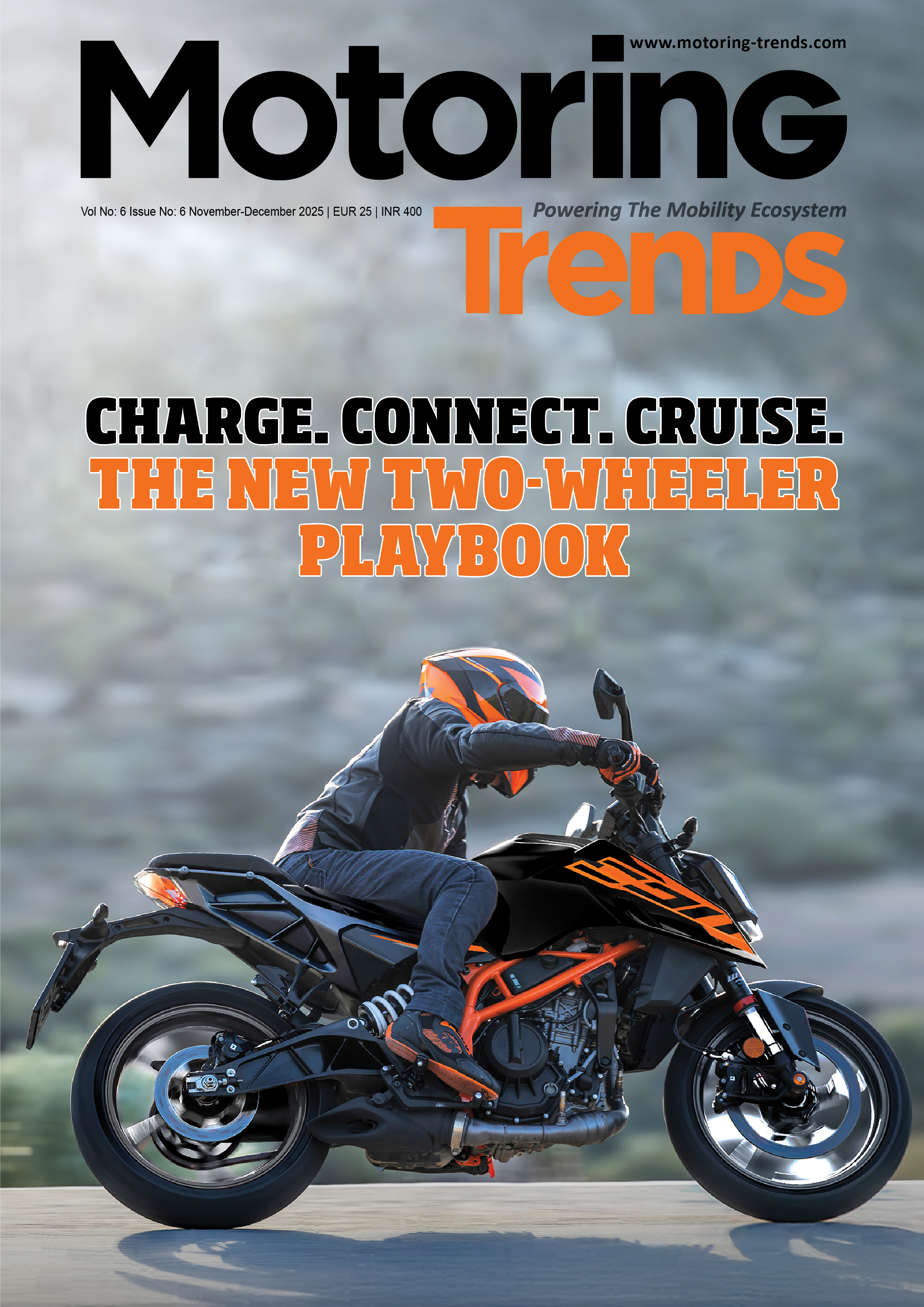
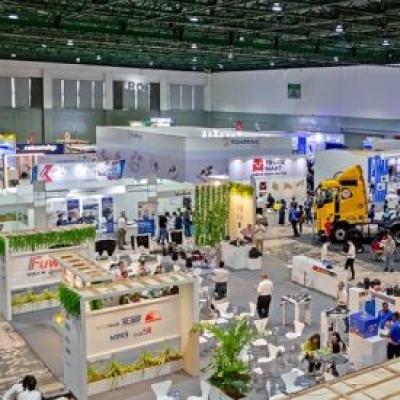


Comments (0)
ADD COMMENT